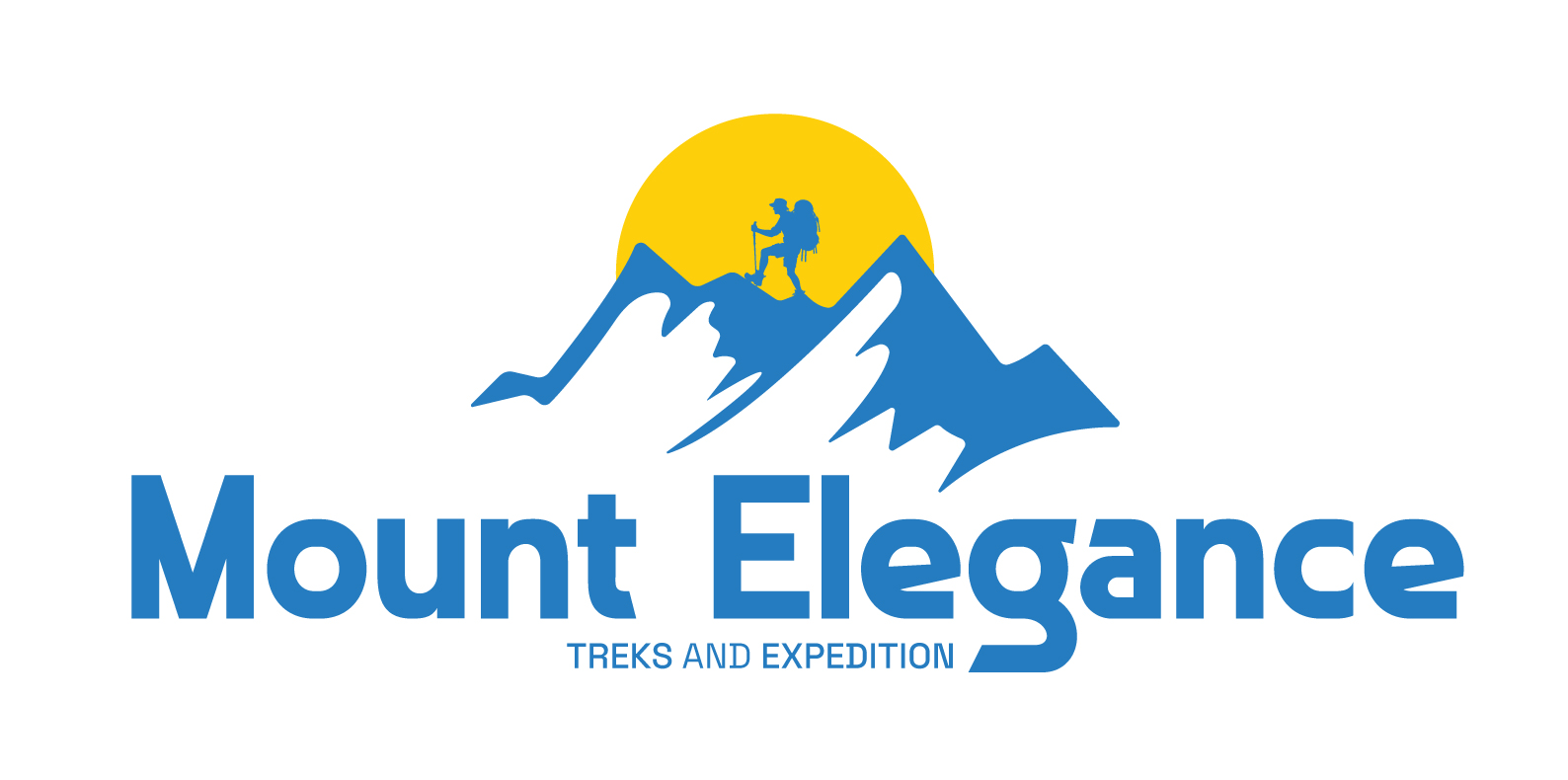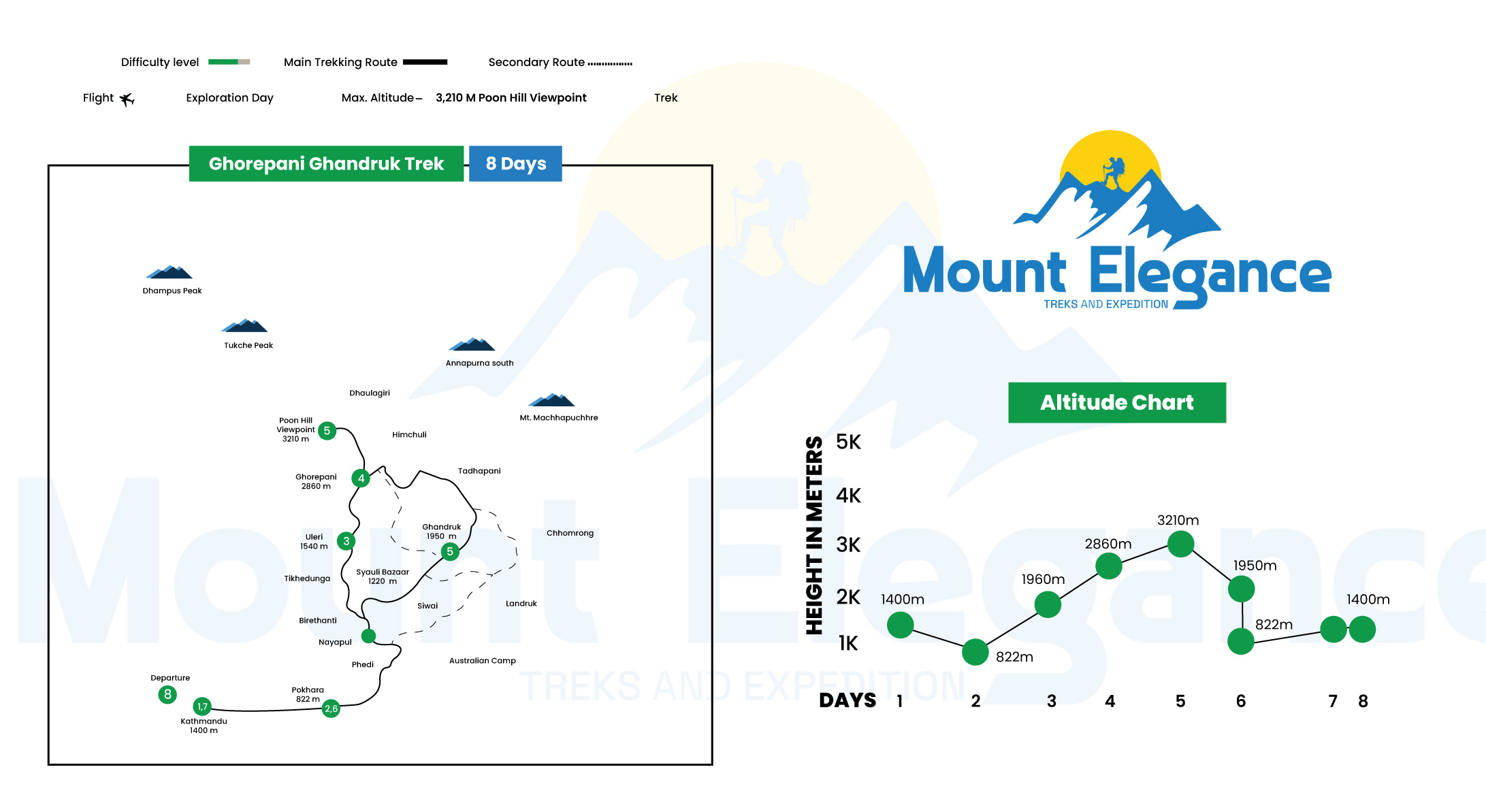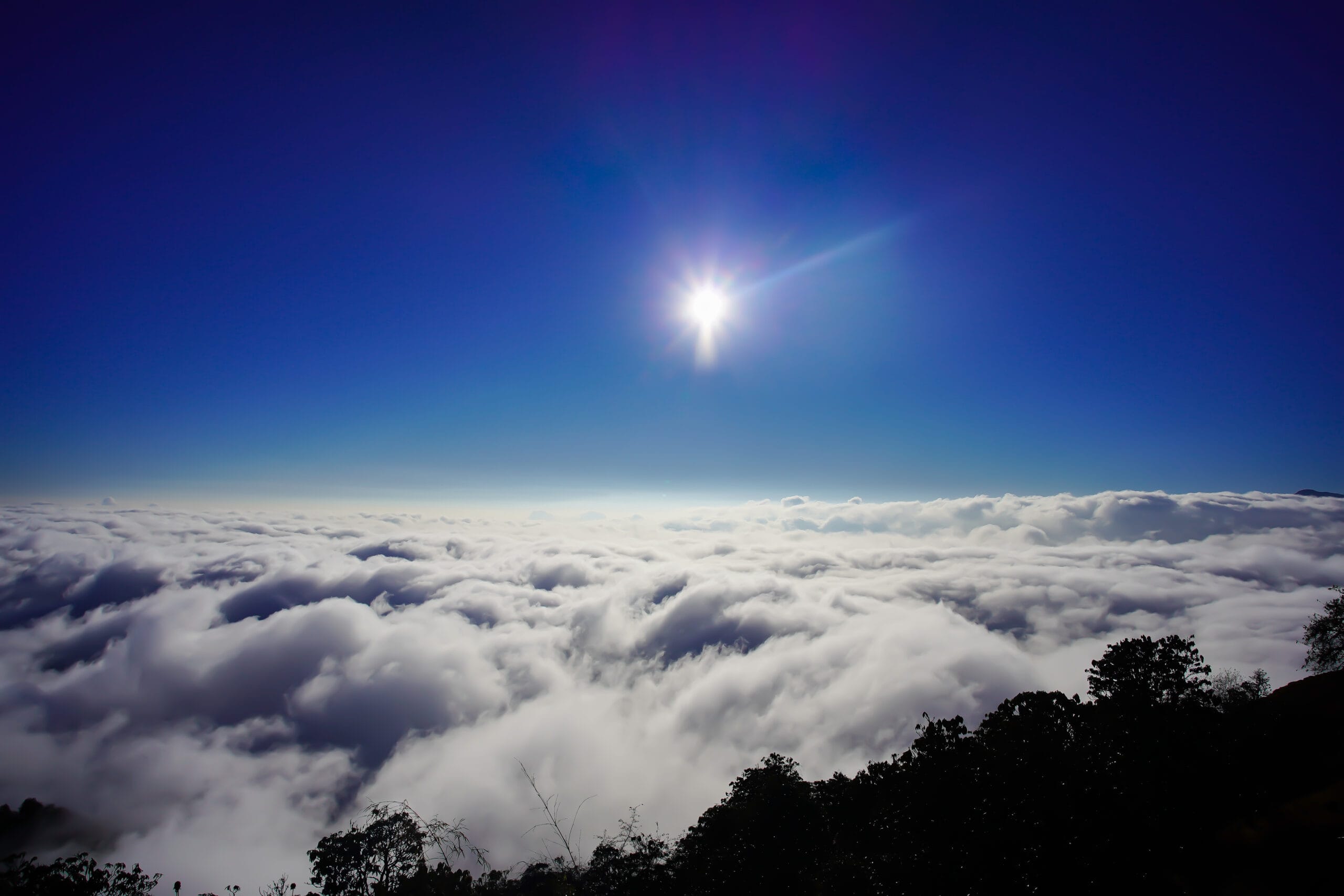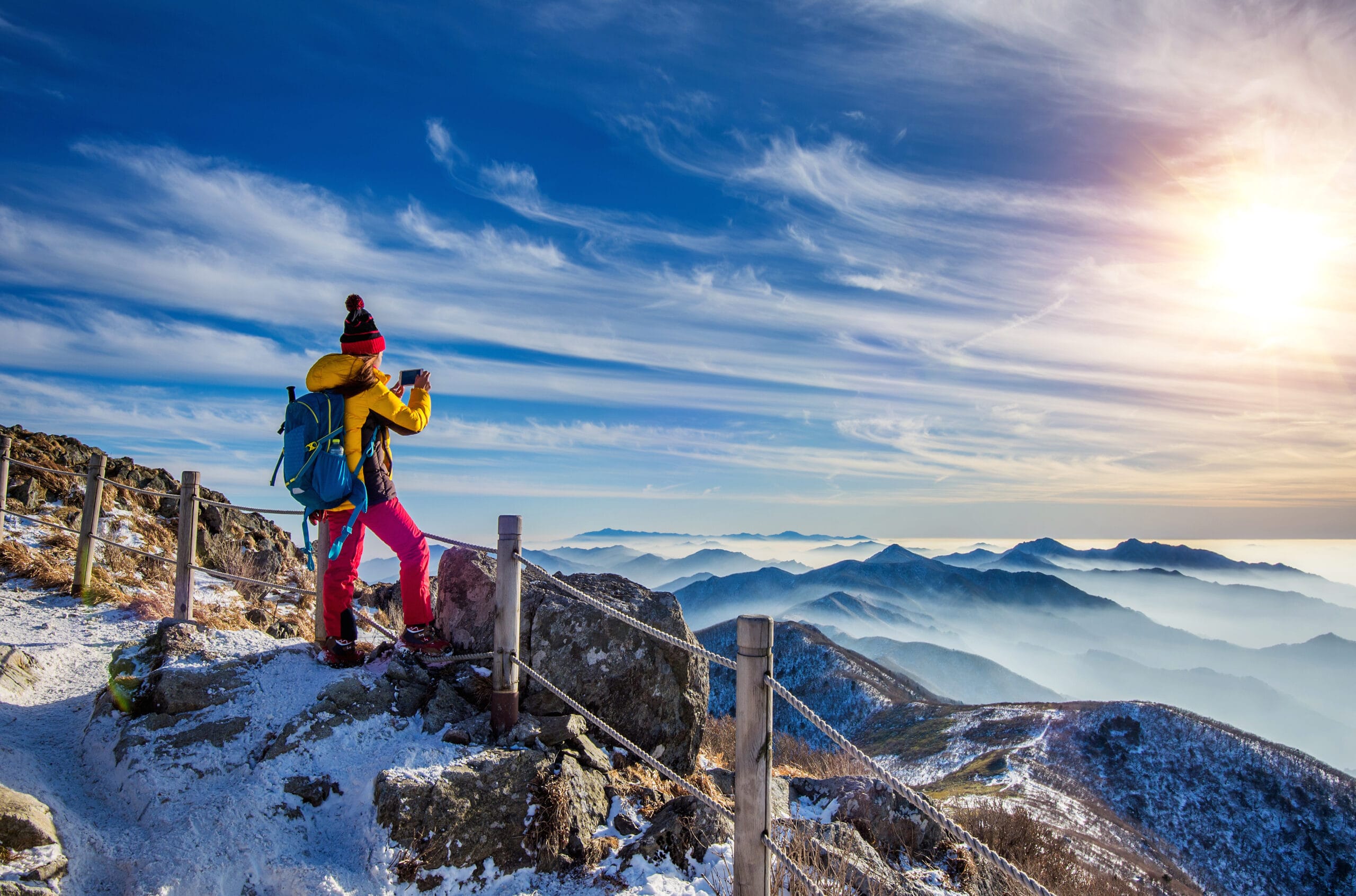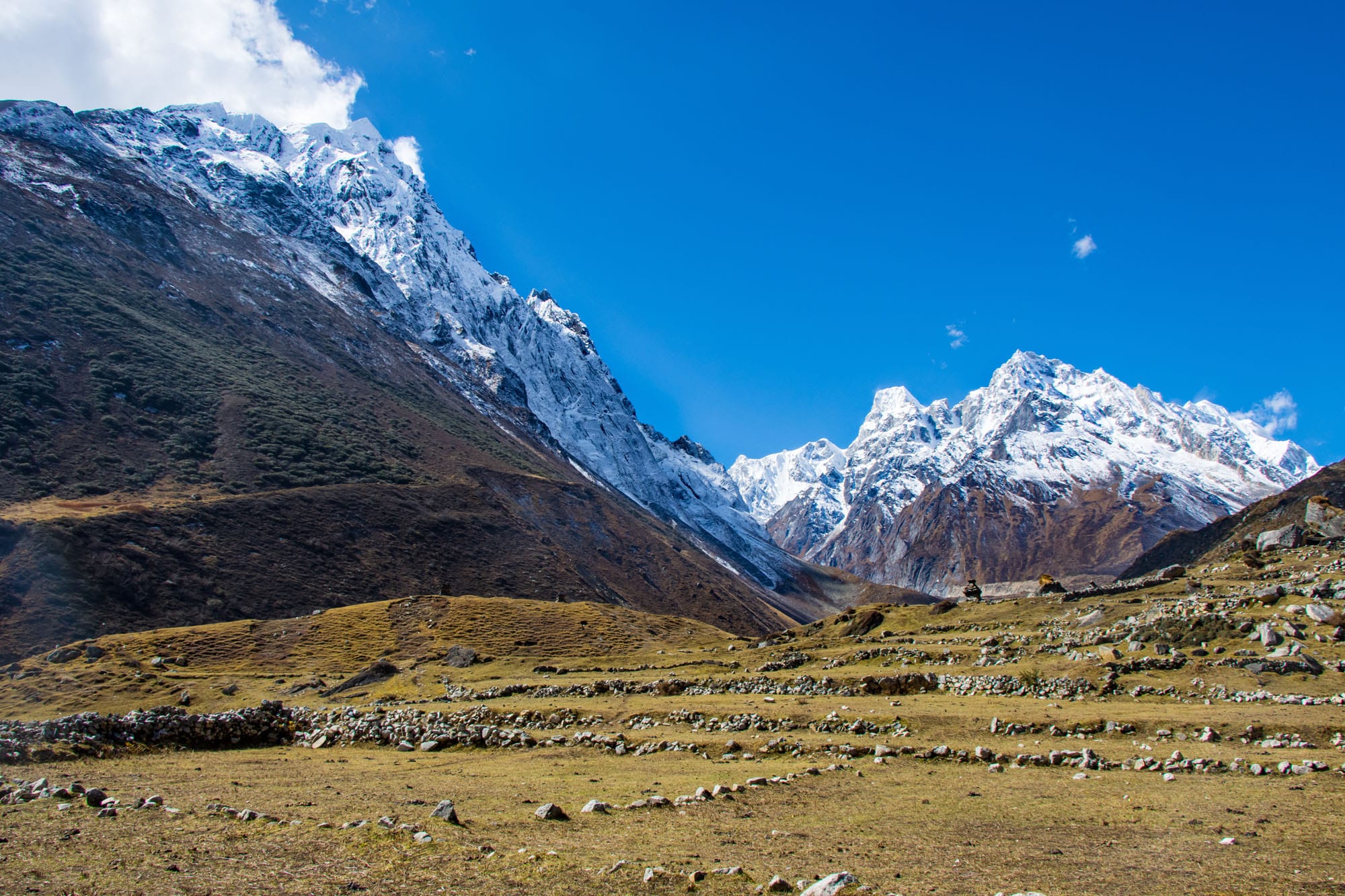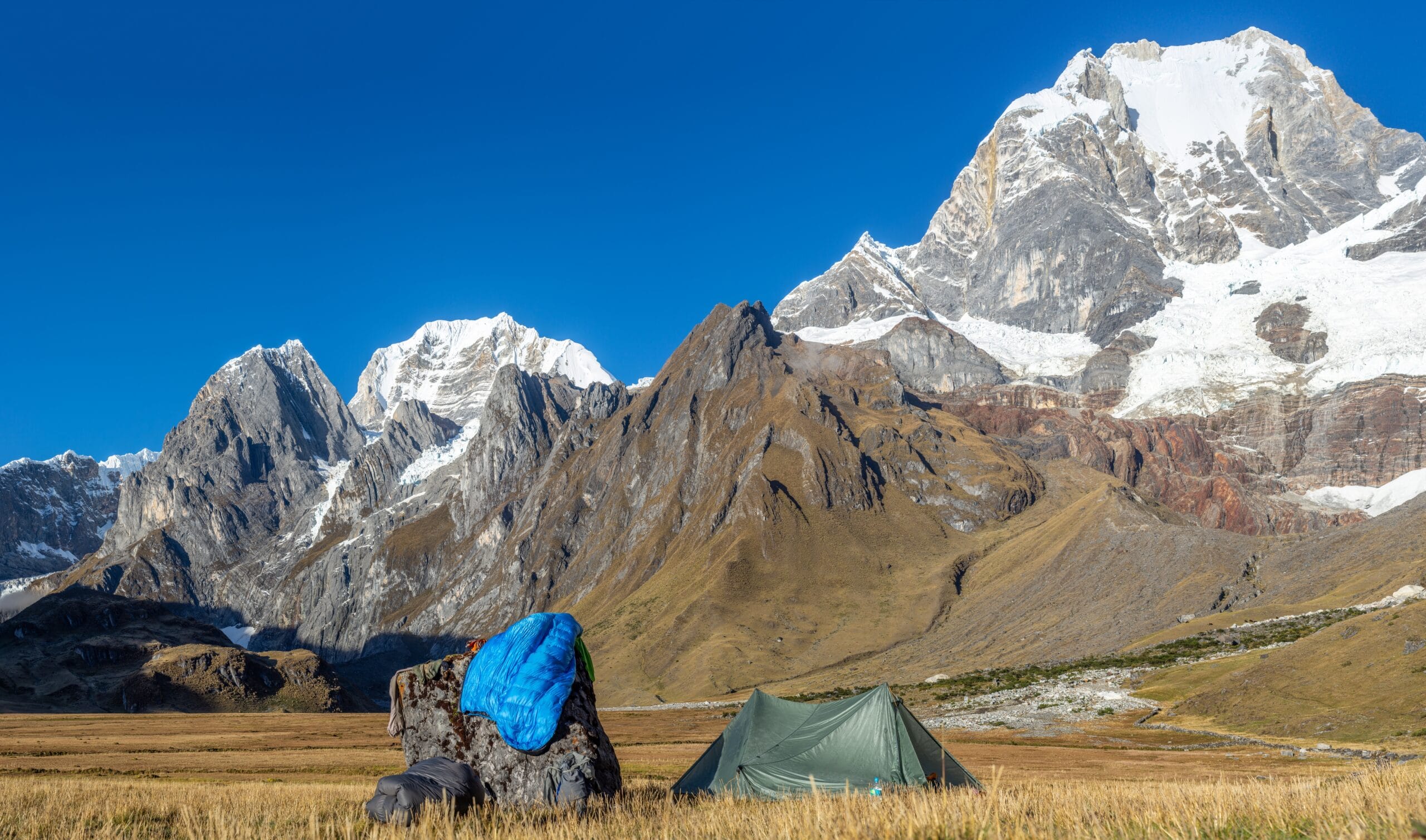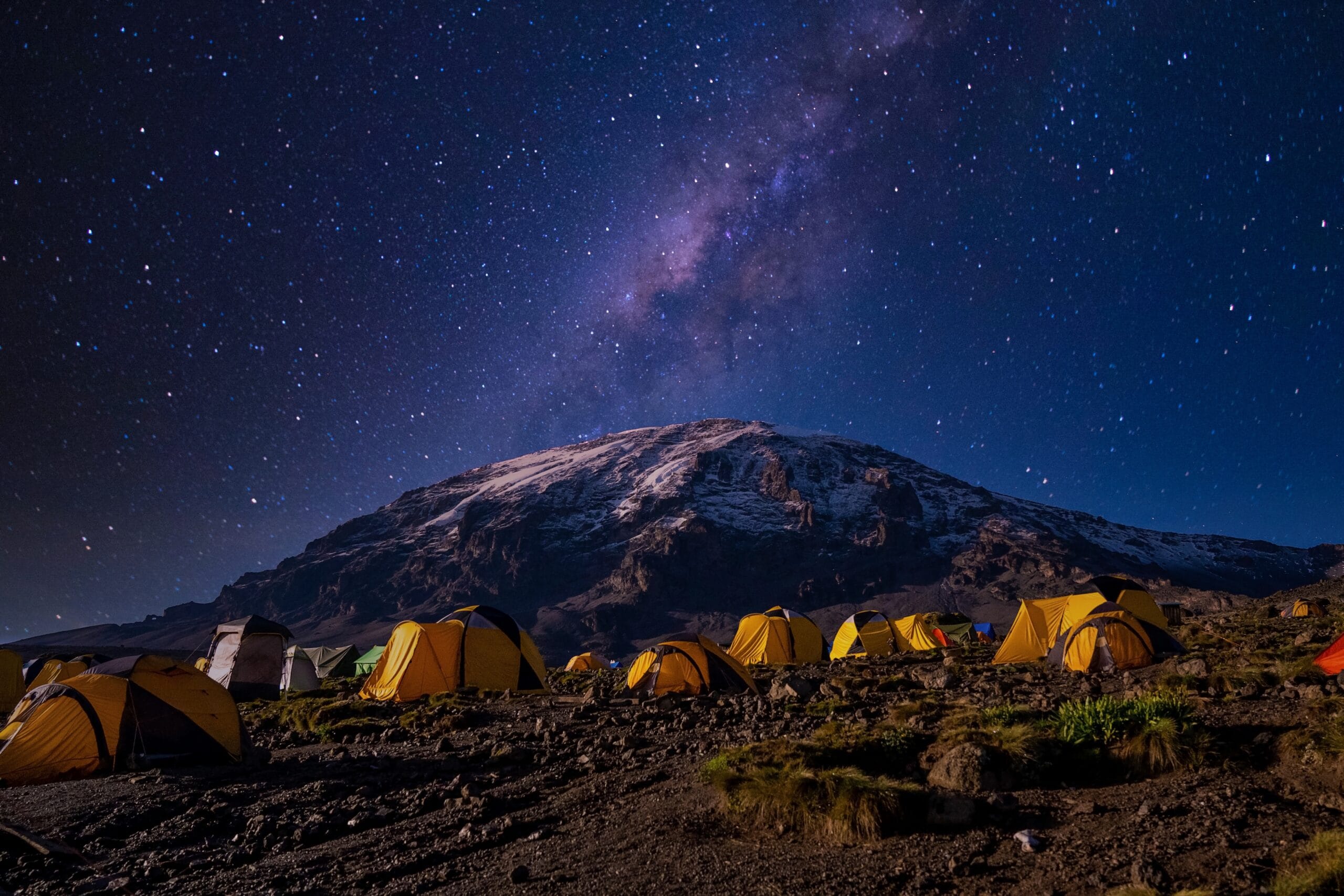Ghorepani Ghandruk Circuit Trek- 8D
Best Season
Highest Altitude
Trip Overview
The Ghorepani Ghandruk Circuit Trek is an ideal adventure for those seeking a shorter yet incredibly scenic trek in the Annapurna region. The Ghorepani Ghandruk Circuit, 8-day journey offers trekkers a chance to explore the cultural richness and natural beauty of Nepal’s mountainous landscape. The trek takes you through lush forests, charming villages, and offers breathtaking panoramic views of the Annapurna and Dhaulagiri ranges.
The highlight of the trek is the early morning hike to Poon Hill, one of the most famous viewpoints in Nepal. As you continue, you’ll witness the sunrise casting a golden glow over Annapurna South, Machapuchare, and Dhaulagiri. Along the way, you’ll also get to experience the warm hospitality of the Gurung and Magar communities.
This trek is perfect for beginners as well as experienced trekkers, offering a moderate level of difficulty and a rewarding experience. As you approach, trekking through the vibrant forests or relaxing in the traditional teahouses. Moreover, Ghorepani Ghandruk Circuit Trek promises a memorable experience in the heart of the Himalayas.
Trip Highlights
- Trek through the beautiful rhododendron forests and traditional Gurung villages.
- Reach the famous Poon Hill viewpoint for a spectacular sunrise over the Annapurna and Dhaulagiri ranges.
- Explore the culturally rich village of Ghandruk, known for its traditional houses and Gurung culture.
- Enjoy panoramic views of mountains like Annapurna South, Machapuchare, and Hiunchuli.
- Accommodation: Stay in comfortable teahouses during the trek; standard hotels in Kathmandu.
- Meals: Full-board meals (breakfast, lunch, and dinner) during the trek; breakfast in Kathmandu.
- Luggage: Porters provided for luggage transport (up to 15 kg per person).
- Internet/WiFi, Electricity, and Water: Available at most lodges along the trekking route (additional charges may apply); complimentary WiFi in Kathmandu hotels.
Essential Items:
- Base Layers: Thermal top and bottom
- Insulation: Fleece jacket and down jacket
- Outer Layer: Waterproof jacket and pants
- Trekking Clothes: Some pairs of trekking pants, quick-dry shirts
- Footwear: Trekking boots, camp shoes/sandals
- Headwear: Sun hat, warm hat, neck gaiter
- Hand-wear: Lightweight gloves, insulated gloves
Accessories: Sunglasses, sunscreen, lip balm , headlamp with extra batteries , trekking poles ,50-60L backpack + daypack
Personal Items: Hygiene essentials (toothbrush, toothpaste, wet wipes), Quick-dry towel ,Water bottle or hydration system (2L capacity) ,Snacks (energy bars, nuts)
Medical Kit: Personal medications, basic first aid, altitude sickness pills
Documents: Passport, trekking permits, travel insurance
Optional: Camera, power bank, Lightweight sleeping bag
Itinerary
- Drive Duration: 30-45 minutes
- Meal: Breakfast
- Highest Altitude: Kathmandu (1,400m/ 4,600ft)
Your adventure begins as you arrive at Tribhuvan International Airport in Kathmandu, where you will be greeted by your trekking guide and transferred to your hotel. Kathmandu, the bustling capital of Nepal, is a vibrant mix of ancient traditions, cultural heritage, and modern city life. Once you settle in, you can explore the lively streets of Thamel, a popular tourist hub filled with trekking shops, restaurants, and cultural sights.
In the evening, you will attend a pre-trek briefing with your guide, where you will receive important details about the trek, discuss the itinerary, and ensure you have all the necessary gear. If time permits, you can also visit nearby UNESCO World Heritage Sites such as Swayambhunath (Monkey Temple) or Kathmandu Durbar Square. A good night’s rest is essential before the journey begins.
- Drive Distance: 200 km (124 miles)
- Drive Duration: 7-8 hours
- Meal: Breakfast
- Highest Altitude: Pokhara (822m/ 2,697ft)
After breakfast, you will embark on a scenic drive from Kathmandu to Pokhara, Nepal’s picturesque lakeside city. The journey along the Prithvi Highway follows the Trishuli River, offering stunning views of rolling hills, terraced farmlands, and small villages along the way. You will pass through beautiful landscapes, occasionally stopping for refreshments and photos.
Upon arrival in Pokhara, you will check into your hotel and have time to explore this charming city. You can take a relaxing stroll along the shores of Phewa Lake, visit the famous Tal Barahi Temple situated on a small island, or enjoy the vibrant cafés and restaurants. The peaceful atmosphere of Pokhara is a perfect place to unwind before your trek begins.
- Drive Distance/ Trek Distance: 42 km (26 miles). / 8km (5 miles)
- Drive Duration/ Trek Duration: 1.5-2 hours. / 4-5 hours
- Meal: Breakfast, Lunch & Dinner
- Highest Altitude: Ulleri (1,960m/ 6,430ft)
The trekking adventure begins today with an early morning drive from Pokhara to Nayapul or Birethanti, the gateway to the Annapurna region. From here, you will start your hike through charming villages and lush green hills, following the banks of the Bhurungdi Khola (river). The trail gradually ascends past terraced farmlands, small waterfalls, and traditional Gurung settlements.
After a few hours of trekking, you will reach Tikhedhunga, where you will begin the steep ascent towards Ulleri. This section of the trek involves climbing more than 3,000 stone steps—a challenging but rewarding experience. As you ascend, you’ll be rewarded with breathtaking views of the surrounding hills and distant peaks. Ulleri is a picturesque village with stone houses and traditional Nepali hospitality, where you will spend the night in a cozy teahouse.
- Trek Distance: 10 km (6.2 miles)
- Trek Duration: 6-7 hours.
- Meal: Breakfast, Lunch & Dinner
- Highest Altitude: Ghorepani (2,860 m/9,385 ft)
After breakfast, you will continue your ascent from Ulleri, trekking through dense rhododendron and oak forests. The trail gradually climbs along a well-defined path, passing through small villages such as Banthanti and Nangethanti, where you can stop for a tea break.
As you get closer to Ghorepani, the temperature starts to drop, and the air becomes fresher. Upon reaching Ghorepani, you will find yourself in one of the most beautiful villages in the Annapurna region, surrounded by stunning mountain views. This village is a major stop for trekkers heading to Poon Hill and other destinations. After checking into your teahouse, you can relax, enjoy the surrounding views, and prepare for the early morning hike to Poon Hill the next day.
- Hike Distance: 1.5 km (0.9 miles)
- Hike Duration: 1-1.5 hours (Poon Hill)
- Trek Distance: 13 km (8 miles)
- Trek Duration: 6-7 hours
- Meal: Breakfast, Lunch & Dinner
- Highest Altitude: Poon hill ((3,210 m/10,525 ft). & Ghandruk (1,950 m/6,398 ft)
Before dawn, you will embark on a short but steep hike to Poon Hill, one of the best viewpoints in the Annapurna region. As you reach the summit, you will witness a breathtaking sunrise over the Himalayas, with panoramic views of Dhaulagiri (8,167m), Annapurna South (7,219m), Machhapuchhre (6,993m), and other peaks. This magical moment is a highlight of the trek. After soaking in the sunrise, you will descend back to Ghorepani for breakfast.
Following breakfast, you will begin your trek towards Ghandruk, descending through rhododendron forests and picturesque villages. The trail offers beautiful views of the mountains and terraced farmlands. As you arrive in Ghandruk, a traditional Gurung village, you will be welcomed by warm hospitality and stunning views of Annapurna South and Machhapuchhre. The village is home to the famous Gurung Museum, where you can learn about the culture and traditions of the Gurung people.
- Trek Distance: 6 km (3.7 miles)
- Trek Duration: 3-4 hours
- Drive Duration: 2-3 hours
- Meal: Breakfast & Lunch
- Altitude: Pokhara (822m/ 2,697ft)
Your final day of trekking begins with a gradual descent through Ghandruk’s beautiful village trails. You will trek through lush forests and terraced fields, passing small waterfalls and streams before reaching Kimche and Syauli Bazaar. From here, you will take a scenic drive back to Nayapul and continue towards Pokhara.
Upon arrival in Pokhara, you will check into your hotel and have the rest of the day free to relax. You can take a leisurely walk around Phewa Lake, explore the lively Lakeside district, or visit local attractions such as Davis Falls and the Gupteshwor Cave. In the evening, you may enjoy a celebratory dinner in one of Pokhara’s many excellent restaurants.
- Drive Distance: 200 km (124 miles)
- Drive Duration: 7-8 hours
- Meal: Breakfast & Dinner
- Altitude: Kathmandu (1,400m/ 4,600ft)
After breakfast, you will drive back to Kathmandu, following the same scenic highway along the Trishuli River. Along the way, you will pass through picturesque hills, riverside villages, and terraced farmlands. The drive provides an opportunity to reflect on the incredible journey you have completed.
Upon arrival in Kathmandu, you will be transferred to your hotel, where you can enjoy a hot shower and some relaxation. You may choose to explore Thamel for some souvenir shopping or visit any cultural sites you may have missed earlier. A farewell dinner with traditional Nepali cuisine is a great way to celebrate the successful completion of your trek which is hosted by mount elegance team.
- Drive Duration: 30-45 minutes
- Meal: Breakfast
- Altitude: Kathmandu (1,400m/ 4,600ft)
Your unforgettable journey in Nepal comes to an end today. Depending on your flight schedule, you may have some free time for last-minute shopping or sightseeing. Your guide will arrange your transfer to Tribhuvan International Airport, ensuring you reach in time for your flight.
As you leave Nepal, you will carry cherished memories of the breathtaking mountains, warm hospitality, and cultural richness. We hope to welcome you again for another Himalayan adventure in the future! Safe travels!
Book Now
Send an Inquiry
Got A Question?

Mr. Shishir Dhakal
Price Inclusion
- Airport transfer in kathmandu.
- Accommodation in tea houses during the trek
- Accommodation in Pokhara and Kathmandu (3-star hotel) with breakfast.
- All meals during the trek (breakfast, lunch, dinner).
- Professional trekking guide.
- Annapurna Conservation Area Permit (ACAP) and TIMS card.
- Round-trip transportation from Kathmandu to the trek starting point and back.
- Seasonal fresh fruit as dessert every evening after dinner.
- Mount Elegance free Tshirt and Route map.
- Complimentary first aid box (Guide will carry during trekking).
- Oximeter to measure the Oxygen (For awareness of the high altitude sickness).
- Duffel bag and sleeping bag for trekking (Should be returned after trek completion).
- One porter for two trekkers.
- Farewell dinner at the end of the trek.
- Certificate after trek completion.
Price Exclusion
- International airfare to and from Kathmandu.
- Nepal entry visa fees.
- Personal trekking equipment and gear.
- Tips for guides and porters.
- Extra expenses such as bar bills, laundry, and telephone charges.
- Travel insurance for personal loss, injury, or illness.
Additional Information
Trip Map
Meals and Accommodation on Ghorepani Ghandruk Circuit Trek
The Ghorepani Ghandruk Circuit Trek, an 8-day journey through the Annapurna region, offers trekkers a taste of Nepali hospitality, mountain landscapes, and charming village culture. Accommodations include tea houses along the trail, with modern comforts provided in Kathmandu and Pokhara.
In Kathmandu and Pokhara, accommodations are arranged in comfortable tourist-standard hotels. These hotels provide air-conditioned rooms with ensuite bathrooms, cozy beds, Wi-Fi, and complimentary breakfasts. After or before the trek, these hotels serve as relaxing retreats with amenities like fine dining options.
Tea houses are the primary accommodation along the Ghorepani Ghandruk Circuit. Rooms are typically twin-sharing with basic amenities such as beds, blankets, and pillows. Though simple, tea houses are clean and comfortable, providing essential rest after a day’s trek. Lower-altitude tea houses tend to be more developed, while those at higher elevations may be more basic, often with shared bathrooms and charging facilities available for an additional fee.
Meals are prepared fresh and cater to trekkers’ nutritional needs. Breakfast includes options like porridge, Tibetan bread, eggs (boiled, fried, or scrambled), pancakes, and hot drinks (tea, coffee, or hot chocolate). For lunch and dinner, trekkers enjoy local dishes like Dal Bhat (a combination of rice, lentils, vegetables, and pickles), noodles, fried rice, pasta, momos (dumplings), and soups. Snack options include biscuits, chocolate bars, and fresh fruits. Ingredients are usually sourced locally, allowing trekkers to experience traditional Nepali flavors.
The Ghorepani Ghandruk Circuit Trek provides both cultural and natural beauty, with well-balanced meals and comfortable accommodations to enhance the trekking experience. From scenic tea houses along the trail to restful city hotels, every part of the trek is designed to make the journey smooth and enjoyable.
Best Season for Ghorepani Ghandruk Circuit Trek
Like the Annapurna and Mardi Himal treks, the best seasons for the Ghorepani Ghandruk Circuit Trek are spring (March to May) and autumn (September to November). These seasons offer favorable weather, clear views, and the opportunity to experience vibrant landscapes and local culture.
Spring (March to May)
- Weather: Warm days with cool nights, ideal for trekking through blooming landscapes.
- Temperature:
- Lower regions (1,000m to 2,500m): 15°C to 25°C during the day, 5°C to 10°C at night.
- Higher regions (up to 2,900m, Ghorepani and Ghandruk): 10°C to 20°C during the day, -5°C to 5°C at night.
- Highlights: Rhododendron forests are in full bloom, with vibrant red and pink colors along the trail. From Poon Hill, trekkers can enjoy panoramic views of Annapurna and Dhaulagiri ranges under clear skies.
Autumn (September to November)
- Weather: Stable weather with mild temperatures, clear skies, and dry air, making it the most popular trekking season.
- Temperature:
- Lower regions (1,000m to 2,500m): 15°C to 25°C during the day, 5°C to 10°C at night.
- Higher regions (up to 2,900m, Ghorepani and Ghandruk): 10°C to 20°C during the day, -5°C to 5°C at night.
- Highlights: Post-monsoon clarity allows for breathtaking mountain views. The lush greenery is refreshing, and local festivals like Dashain and Tihar add cultural richness to the experience.
Winter (December to February)
- Weather: Cold temperatures with occasional snowfall at higher altitudes, but mostly clear skies.
- Temperature:
- Lower regions (1,000m to 2,500m): 10°C to 15°C during the day, 0°C to 5°C at night.
- Higher regions (up to 2,900m, Ghorepani and Ghandruk): -5°C to 5°C during the day, -10°C to -5°C at night.
- Challenges: Snow and colder conditions at higher altitudes make winter trekking more challenging but can offer quiet trails and serene landscapes for those prepared with winter gear.
Monsoon/Summer (June to August)
- Weather: Frequent rain, humidity, and cloudy days make this season challenging for trekking.
- Temperature:
- Lower regions (1,000m to 2,500m): 20°C to 30°C during the day, 10°C to 20°C at night.
- Higher regions (up to 2,900m, Ghorepani and Ghandruk): 15°C to 20°C during the day, 5°C to 10°C at night.
- Challenges: Heavy rainfall, leeches, and slippery trails can make trekking difficult. However, for those willing to trek in the rain, this season offers lush green landscapes and fewer crowds.
Gurung community of Ghandruk village
Ghandruk is more than just a scenic stop on the Annapurna Trek—it’s a chance to connect with the heart and soul of the Gurung community. As you walk through the charming stone-paved paths of the village, you’re likely to be greeted with warm smiles and a friendly “Namaste.” The Gurung people are known for their hospitality, rich traditions, and proud history, especially their legacy as brave Gurkha soldiers. Spending time here offers a beautiful glimpse into their way of life—whether it’s watching women weaving traditional clothes, tasting home-cooked dal bhat, or enjoying local folk songs and dances in the evening. With stunning mountain views all around and a peaceful village vibe, Ghandruk invites you to slow down and truly experience the culture that makes this region so special.
Equipment Checklist
Trekking in Nepal is an incredible adventure, taking you through diverse landscapes, from lush forests to rugged mountain trails. To fully enjoy the experience, it’s crucial to pack the right equipment. Here’s an essential checklist to help you prepare for your trek, ensuring you’re ready for the challenges and beauty of the Himalayas.
1. Clothing
- Base Layers: Moisture-wicking base layers (thermal tops and bottoms) are essential for regulating your body temperature. Opt for lightweight, breathable materials.
- Mid Layers: Fleece jackets or lightweight down jackets provide warmth in colder temperatures. These layers should be easy to add or remove as needed.
- Outer Layers: A waterproof and windproof jacket is essential to protect against rain, wind, and snow. Make sure it’s breathable to stay comfortable during strenuous activities.
- Trekking Pants: Lightweight, quick-drying pants are ideal. Consider packing thermal pants for colder regions or seasons.
- Gloves, Hats, and Buffs: Warm gloves, a woolen hat, and a buff or neck gaiter help protect against the cold at high altitudes.
- Trekking Socks: High-quality, moisture-wicking socks (at least three pairs) are crucial to prevent blisters and keep your feet dry.
2. Footwear
- Trekking Boots: Sturdy, well-fitted, and waterproof trekking boots with good ankle support are essential. Break them in before your trek to avoid blisters.
- Sandals or Camp Shoes: Lightweight sandals or camp shoes for relaxing at tea houses or lodges after a long day of trekking.
3. Backpack and Storage
- Daypack (20-30 liters): A small, comfortable daypack with rain cover to carry essentials like water, snacks, camera, and extra layers.
- Duffel Bag (60-80 liters): For your main gear, use a durable, waterproof duffel bag that will be carried by porters.
- Dry Bags or Ziplock Bags: For protecting electronics, documents, and clothes from moisture.
4. Trekking Gear
- Trekking Poles: Adjustable trekking poles reduce the strain on your knees, especially during steep descents.
- Headlamp with Extra Batteries: Essential for early morning starts, late finishes, or use in lodges where electricity may be limited.
- Water Bottles and Purification: Carry reusable water bottles and purification tablets or a water filter to ensure safe drinking water.
- Sleeping Bag: A four-season sleeping bag rated for temperatures as low as -10°C to -15°C is recommended for high-altitude treks.
5. Health and First Aid
- Personal First Aid Kit: Include essentials like band-aids, antiseptic wipes, blister treatment, pain relievers, and any personal medications.
- Sunscreen and Lip Balm: High SPF sunscreen and lip balm are essential to protect against strong UV rays at high altitudes.
- Hand Sanitizer and Wet Wipes: Useful for maintaining hygiene when water is limited.
- Altitude Sickness Medication: Consult your doctor about medications like Diamox for preventing altitude sickness.
6. Personal Items and Extras
- Snacks and Energy Bars: Pack lightweight, high-energy snacks for a quick boost on the trail.
- Sunglasses with UV Protection: Essential for protecting your eyes from the intense sunlight and snow glare at high altitudes.
- Camera or Smartphone: To capture the breathtaking scenery. Don’t forget extra batteries or a portable charger.
- Personal Toiletries: Include biodegradable soap, toothbrush, toothpaste, and a small towel.
- Cash: Carry enough local currency for expenses along the trail, as ATMs are not available in remote areas.
7. Documents
- Passport and Visa: Carry your passport, visa, and photocopies in a waterproof pouch.
- Permits: Obtain trekking permits such as the TIMS card and national park or conservation area permits, depending on your route.
- Travel Insurance Details: Ensure you have comprehensive travel insurance covering high-altitude trekking, emergency evacuations, and medical expenses.
Final Tips
- Pack Light: Try to keep your backpack under 10-15 kg. The lighter your pack, the more enjoyable your trek will be.
- Layer Up: Layering is key for comfort in Nepal’s changing weather conditions. Bring versatile clothing that can be easily added or removed.
- Double-Check Your Gear: Before you set off, double-check that you have all the essentials. Missing a crucial item could make your trek less comfortable or even dangerous.
Frequently Asked Questions(FAQs)
What items should I pack for a trip to Nepal?
When packing for a trip to Nepal, it’s essential to consider the country’s climate, culture, and altitude. Nepal’s weather can be unpredictable, with sudden changes in temperature and precipitation, especially in the mountains. We recommend packing:
* Lightweight and breathable clothing, including layers for cold evenings
* Waterproof jacket and pants
* Sturdy hiking boots or shoes
* Warm hat, gloves, and scarf for high-altitude treks
* Sun protection, including sunscreen, sunglasses, and a hat
* Insect repellent and personal first-aid kit
* Power adapter and voltage converter for charging electronic devices
*Reusable water bottle and water purification tablets or filter
* Cultural attire, such as comfortable pants and modest tops, for visiting temples and villages
* Emergency funds, travel insurance, and copies of important documents
At Mount Elegance Treks and Expedition, we can provide you with a detailed packing list and guidance on what to expect from the weather and cultural norms in Nepal. Our experienced guides and staff are also happy to help you prepare for your adventure and ensure that you have everything you need for a safe and enjoyable journey.
What payment methods does Mount Elegance Treks accept?
Here is a potential answer for the FAQ question:
What payment methods does Mount Elegance Treks accept?
At Mount Elegance Treks, we offer a range of payment options to make booking your trek as convenient as possible. We accept bank transfers, credit card payments (including Visa, Mastercard, and American Express), and online payments through our website. We also accept payment through PayPal. For bookings, a deposit of 20% is required to secure your spot, with the balance due 30 days prior to your trek departure date. Our payment process is secure and transparent, and we’ll provide you with a detailed invoice and payment instructions once you’ve booked your trek. If you have any questions or concerns about payment, feel free to contact us!
Does Mount Elegance Treks arrange permits for trekking?
Here is a potential answer for the FAQ question:
Does Mount Elegance Treks arrange permits for trekking?
Yes, we take care of all the necessary permits and paperwork for our treks. As a licensed and reputable trekking operator, we have established relationships with the relevant authorities to ensure that all necessary permits are obtained in a timely and efficient manner. This includes trekking permits, national park fees, and any other required documents. Our team will arrange and obtain all the necessary permits on your behalf, so you can focus on preparing for your adventure. We’ll take care of the details, so you can enjoy a hassle-free trekking experience with Mount Elegance Treks!
Are Mount Elegance Treks guides certified in first aid?
Here is a potential answer for the FAQ question:
Are Mount Elegance Treks guides certified in first aid?
Yes, our guides are highly trained and certified in wilderness first aid. We take the safety and well-being of our clients very seriously, and our guides undergo regular training to ensure they are equipped to respond to any medical emergency that may arise during the trek. Our guides are certified in basic life support, wound management, and altitude sickness prevention, among other topics. Additionally, we carry a comprehensive first aid kit with us on every trek, and our guides are trained to use it effectively. You can feel confident and secure knowing that you’re in good hands with Mount Elegance Treks!
Can Mount Elegance Treks arrange custom itineraries?
Here is a potential answer for the FAQ question:
Can Mount Elegance Treks arrange custom itineraries?
Absolutely! At Mount Elegance Treks, we understand that every traveler is unique, with their own interests and preferences. That’s why we offer custom itinerary planning services to tailor your Nepal travel experience to your specific needs and desires. Whether you’re looking to add or remove activities, extend your stay, or explore off-the-beaten-path destinations, our expert team is happy to work with you to create a personalized trip that exceeds your expectations. Simply contact us to share your ideas and let us take care of the rest!
What makes Mount Elegance Treks different from other trekking companies?
At Mount Elegance Treks and Expedition, we’re proud to stand out from the crowd with our unique approach to trekking and expedition services. While other companies may offer similar itineraries and tours, we focus on providing a personalized, authentic, and sustainable experience that sets us apart.
Our Commitment to Sustainability
We’re dedicated to responsible and sustainable tourism practices, which means we prioritize the well-being of our clients, local communities, and the environment. We work with locally-owned tea houses and lodges, which helps to support the local economy and preserves the natural beauty of the region.
Personalized Travel Experience
We believe that every traveler is unique, and we tailor our itineraries to meet the specific needs and interests of our clients. Whether you’re a seasoned adventurer or a first-time trekker, we’ll work with you to create a personalized itinerary that ensures an unforgettable experience.
Local Expertise and Knowledge
Our team of guides and staff are locals who have grown up in the mountains and have extensive knowledge of the region. They’ll share their insights and stories with you, providing a deeper understanding of the culture, history, and natural beauty of Nepal.
Innovative and Sustainable Practices
We’re constantly looking for ways to improve our operations and minimize our impact on the environment. We use eco-friendly materials, reduce waste, and support conservation efforts in the region.
Mount Elegance Treks’ Core Values
At Mount Elegance Treks, we’re guided by a set of core values that reflect our commitment to:
Quality: We strive for excellence in everything we do.
Integrity: We operate with transparency and honesty.
Respect: We respect our clients, local communities, and the environment.
Innovation: We’re always looking for new and better ways to provide exceptional service.
Experience the Mount Elegance Treks Difference
When you choose Mount Elegance Treks, you’re not just booking a trek – you’re joining a community of like-minded travelers who value sustainability, cultural exchange, and adventure. We look forward to welcoming you to Nepal and sharing our passion for trekking and exploration with you.
What services does Mount Elegance Treks offer?
At Mount Elegance Treks and Expedition, we offer a wide range of services to make your adventure in Nepal a memorable and hassle-free experience. Our team of experts is dedicated to providing you with the best possible services, from trekking and peak climbing to cultural tours and wilderness expeditions.
Trekking and Expedition Services
We offer a variety of trekking and expedition services, including:
Trekking: We offer guided trekking services to popular destinations such as the Everest Base Camp, Annapurna Circuit, and Langtang Valley.
Peak Climbing: Our experienced guides and climbers will help you conquer some of the highest peaks in the world, including Island Peak and Mera Peak.
Wildlife Tours: Join us on a wildlife tour to see the majestic Bengal tiger, one-horned rhinoceros, and other endangered species in their natural habitats.
Cultural Tours: Explore Nepal’s rich cultural heritage on a guided tour, visiting ancient temples, monasteries, and traditional villages.
Logistical Services
We also offer a range of logistical services, including:
Hotel Booking: We can book your hotel accommodations in Kathmandu and other destinations in Nepal.
Transportation: Our team can arrange for transportation to and from the trekking start point, as well as during the trek.
Permits and Licenses: We will handle all necessary permits and licenses for your trek or expedition.
Camping and Lodging: We can provide camping and lodging facilities during your trek or expedition.
Support Services
Our team is dedicated to providing you with support services, including:
Guided Tours: Our experienced guides will accompany you on your trek or expedition, providing valuable insights and support.
Cuisine: We can provide you with delicious and nutritious meals during your trek or expedition.
First Aid: Our guides are trained in first aid and can provide medical assistance in case of an emergency.
Communication: We can provide you with communication facilities, including satellite phones and internet access.
Mount Elegance Treks’ Commitment to Quality
At Mount Elegance Treks and Expedition, we are committed to providing you with the highest quality services and experiences. Our team of experts is dedicated to ensuring your safety, happiness, and satisfaction. We look forward to welcoming you to Nepal and sharing our country’s beauty and culture with you.
What are the environmental challenges facing Nepal's trekking regions?
Nepal’s trekking regions are facing several environmental challenges that can impact the beauty and sustainability of these areas. Our team at Mount Elegance Treks and Expedition wants to share some information on the environmental challenges facing Nepal’s trekking regions and what we’re doing to address them.
Environmental Challenges:
Climate Change: Climate change is causing temperature fluctuations, changing precipitation patterns, and increasing the risk of natural disasters such as landslides and glacial lake outburst floods (GLOFs).
Deforestation and Land Degradation: Deforestation and land degradation are occurring due to the increasing demand for fuelwood, livestock grazing, and agriculture, leading to soil erosion and loss of biodiversity.
Pollution: Pollution from human waste, litter, and (trash) is affecting the water quality and health of trekkers and local communities.
Over-Tourism: Over-tourism is putting pressure on infrastructure, resources, and the environment, leading to degradation of trails, campgrounds, and surrounding ecosystems.
Consequences of Environmental degradation:
Loss of Biodiversity: Environmental degradation is leading to the loss of biodiversity, including the disappearance of rare and endangered species.
Soil Erosion: Soil erosion is occurring due to deforestation and land degradation, leading to landslides and increased sedimentation in waterways.
Water Pollution: Water pollution is affecting the health of trekkers and local communities, and is also impacting the quality of drinking water and agricultural lands.
What We’re Doing to Address Environmental Challenges:
Sustainable Tourism Practices: We follow sustainable tourism practices, including eco-friendly accommodations, responsible waste management, and support for local conservation efforts.
Environmental Conservation: We work with local organizations to protect Nepal’s natural beauty and support conservation efforts, including tree planting, wildlife conservation, and sustainable forest management.
Community Engagement: We engage with local communities to promote environmental awareness and involve them in conservation efforts.
How You Can Help:
Responsible Trekking: Practice responsible trekking by following Leave No Trace principles, reducing waste, and respecting local environments.
Support Local Conservation Efforts: Support local conservation efforts by donating to reputable organizations or participating in community-led conservation projects.
* Spread Awareness: Spread awareness about the importance of environmental conservation and the impact of human activities on Nepal’s trekking regions.
Our team at Mount Elegance Treks and Expedition is committed to protecting Nepal’s environment and promoting sustainable tourism practices. If you have any questions or concerns about environmental challenges facing Nepal’s trekking regions, please don’t hesitate to ask.
What are teahouses and what facilities do they offer?
Teahouses are simple lodges that provide accommodation and basic amenities to trekkers in the mountains of Nepal. These family-run establishments offer a unique and authentic experience, allowing you to immerse yourself in the local culture. Teahouses typically provide dormitory-style rooms, private rooms, and shared bathrooms, as well as a restaurant serving traditional Nepalese cuisine and a cozy common area. Facilities may also include hot showers, laundry services, and internet access. While teahouses are basic, they offer a warm and welcoming atmosphere, and our experienced guides can help you navigate the teahouse system and ensure a comfortable stay. At Mount Elegance Treks and Expedition, we work closely with teahouse owners to ensure that our clients receive the best possible service and enjoy a memorable stay in the mountains.
Where can I rent trekking equipment in Kathmandu?
Kathmandu offers a wide range of shops and outlets where you can rent trekking equipment, including hiking boots, trekking poles, sleeping bags, and jackets. Some of the most reputable rental shops include Kathmandu Trekking Stores, Himalayan Adventure Rentals, and Nepal Trekking Store. These shops offer high-quality equipment at reasonable prices, and many also provide rental guidance and advice to ensure you get the right gear for your trek. At Mount Elegance Treks and Expedition, we can provide you with a list of recommended rental shops and help you navigate the process, so you can focus on preparing for your adventure. Our team is also happy to assist with gear fitting and ensure you’re properly equipped for a safe and enjoyable trek.
Is it safe to trek alone in Nepal?
While trekking alone can be a liberating experience, we recommend that travelers consider the safety aspects of solo trekking in Nepal. The country has a well-trodden trekking infrastructure, with many established trails and tea houses, and most trekkers encounter no issues. However, as with any travel, especially in remote areas, there are risks involved. To minimize these risks, it’s essential to plan thoroughly, research your route, and let someone know your itinerary. At Mount Elegance Treks and Expedition, we offer guided trek options and can also provide advice on solo trekking. If you do choose to trek alone, make sure to stay informed, be prepared, and take necessary precautions to ensure a safe and enjoyable journey.
What permits do I need for trekking in Nepal?
To trek in Nepal, you’ll need to obtain the following permits:
* **Trekkers’ Information Management System (TIMS) card**: Issued by the Nepal Tourism Board, this card is required for all trekkers and can be obtained at the trekking starting point or in Kathmandu.
* **National Park Entrance Fee**: If your trek takes you through a national park, such as Sagarmatha National Park (Everest region) or Annapurna Conservation Area, you’ll need to pay an entrance fee.
* **Special permits**: Certain treks, such as the Everest Base Camp trek or the Annapurna Circuit, require a special permit, which can be arranged through a registered trekking agency like Mount Elegance Treks and Expedition.
* **Mountain Royalty**: For treks above 6,000 meters, a mountain royalty fee is required, which is paid to the Government of Nepal.
At Mount Elegance Treks and Expedition, we handle all permit arrangements on your behalf, ensuring a hassle-free trekking experience. Our experienced guides and staff will guide you through the permit process, providing you with all the necessary documents and fees. This allows you to focus on enjoying the stunning natural beauty and cultural richness of Nepal.
What is the weather like in Nepal throughout the year?
Nepal’s weather varies greatly throughout the year, with four distinct seasons: spring, summer, autumn, and winter. The climate differs significantly across the country, with the Himalayas creating a range of microclimates.
* **Spring (March to May)**: Mild temperatures, with average highs around 22°C (72°F), and occasional rain showers. This is an ideal time for trekking and sightseeing.
* **Summer (June to August)**: Hot and humid, with temperatures ranging from 15°C to 30°C (59°F to 86°F). The monsoon season brings heavy rainfall and occasional landslides.
* **Autumn (September to November)**: Comfortable temperatures, with average highs around 20°C (68°F), and clear skies. This is a popular time for trekking and outdoor activities.
* **Winter (December to February)**: Cool to cold temperatures, with average lows around 2°C (36°F), and occasional snowfall in the mountains. This is a great time for winter sports and cultural events.
At higher elevations, the weather can be unpredictable and colder, with snow and ice possible even in spring and autumn. Mount Elegance Treks and Expedition recommends checking the weather forecast before your trip and packing accordingly. Our experienced guides and staff can also provide valuable insights and advice on navigating Nepal’s diverse climate.
How do I get to the starting point of the trek?
The starting point of most Everest treks is Lukla (2,860m/9,383ft), which is a small town in the Solu-Khumbu region of Nepal. To get to Lukla, you can fly from Kathmandu’s Tribhuvan International Airport to Lukla Airport, which is a 30-minute scenic flight. We can arrange your flight tickets and transportation from Kathmandu to Lukla. Alternatively, if you prefer to trek to Lukla, you can take a bus or private vehicle from Kathmandu to Jiri (1,950m/6,398ft), and then trek to Lukla, which takes around 2-3 days. Our experienced guides will meet you at Lukla and assist you with your trekking arrangements, including accommodation, meals, and porter services. We will also provide you with detailed instructions and information to ensure a smooth and hassle-free journey to the starting point of your trek.
Experiences That Last a Lifetime
Verified Fantastic Annapurna Base Camp Trek Everything was perfectly organized, down to the last detail. Everything ran smoothly and was very well planned. The care and company were absolutely lovely 🙂 it was amazing time. 9 days of trekking with breathtaking views, delicious food along the way, and amazing guides.On top of that, I ended up in the hospital because of appendicitis, and I was never alone — the organizers surrounded me with exceptional care. Thank you Shishir 🙏🏻Verified Very amazing. Very beautiful places. Breathtaking views and the guide @ Mr. Santosh, very nice and amazing talent.The food and culture was purely loss of words to us. Thank you.Verified Najpiękniejsze góry świata, cudowny magiczny czas. Wspaniale doświadczenie, doskonała organizacja, przemili przewodnicy i porterzy, zawsze gotowi pomóc i wesprzeć radą. Wyprawa którą na zawsze pozostanie w moim sercu.Doznania których nie sposób doświadczyć nie biorąc udziału w tej wyprawie. Z pewnością polecę udział w tej przygodzie moim przyjaciołom.Verified Annapurna circuit, Nar Poo trek, Mardi himal, etc This company manages the entire process very responsibly and leads the contract in detail, very kindly and reliably. Finally all costs are more reasonable than other companiesVerified Mr tourism "I had an incredible experience with Mouth elegance during my Mr. Tourism journey! Their professionalism, expert guidance, and warm hospitality made every trek seamless and unforgettable. Highly recommended for anyone looking to explore Nepal’s breathtaking landscapes!"Verified Annapurna Rounding/Punhill.abc Dream-like sea trip February 13 Annapurna Rounding/Punhill.abcTrekkingMeeting with the president and guide Ray at Tammel Hotel...Knowing everything about travel Thank you for moving forward...I was able to leave the trekking. Thank you.Without completing a journey of 20 days With the hard work of well-led Ray GaidenWe had a comfortable and enjoyable trip.Thank you for the careful care of the local travel agent.I wish to visit again next time.We wish the unlimited development of the travel company.Verified The most wonderful and satisying Trek with the best team b I had the most amazing trip. I had been to Poonhill trek ! Thanks to Mr Shishir Dhakal, and Mount Elegance, such a supportive guy ! Without your help, i may not have such good trip ! my best memory of life !
